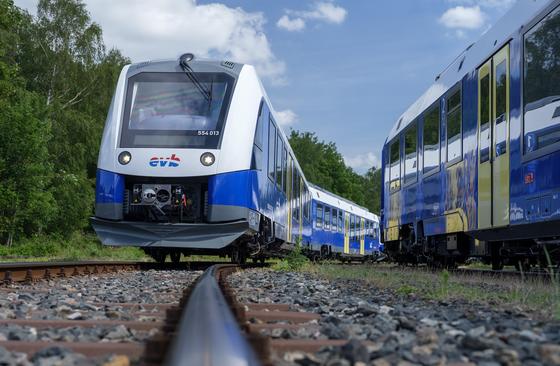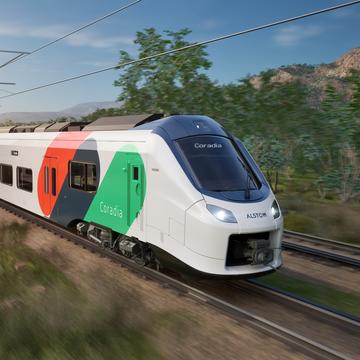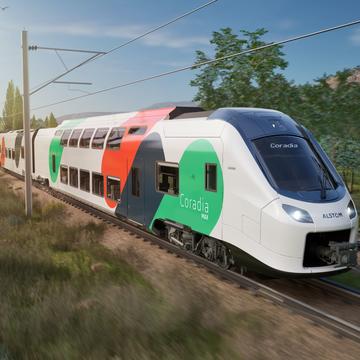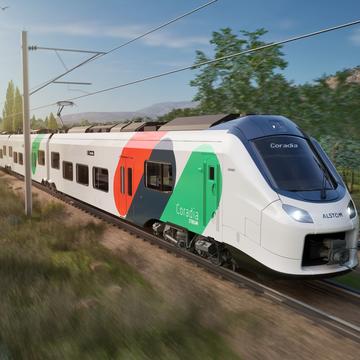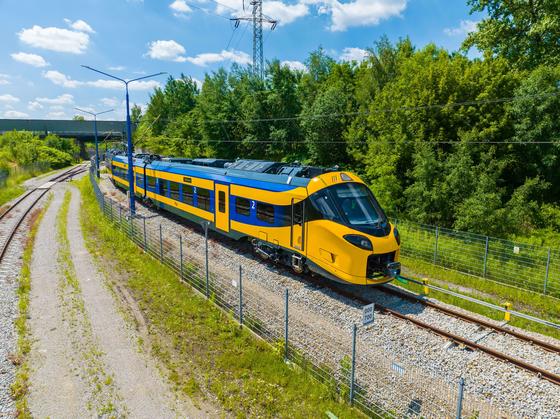
Energy efficiency: The Coradia regional train advantage

Coradia regional trains exemplify Alstom’s commitment to energy efficiency, advanced technology, and innovative design, ensuring a sustainable and efficient future for regional rail transport.

Brahim Soua is Alstom’s Vice-President for the Regional Rolling Stock Platform. He holds a PhD from the Ecole Nationale des Ponts et Chaussés and a degree from Ecole Nationale Superieure des Arts et Metiers. With a 23-year career at Alstom, Brahim has held various positions and is currently driving the strategy for a versatile and emission-free regional train portfolio. When he is not involved in developing new solutions at work, he enjoys long walks in Montmartre and a good night out at the theatre.
Connect with Brahim on LinkedIn!
What is the significance of energy efficiency in Coradia regional trains?
A focus on energy consumption is crucial for our customers and therefore energy efficiency is at the core of the design of our Coradia regional trains. With the cost of energy being a significant factor for train operators, today our Coradia trains consume up to 35% less energy than their predecessors. This has been achieved through improvements in train architecture, efficient management of key energy consumers, and optimised driving strategies.
In what ways does Alstom approach the design of its trains to balance capacity, performance, and energy consumption?
Alstom tailors train configurations to customer needs, ensuring resources are utilised efficiently, costs minimised, and environmental impact reduced. For example, lighter trains require less energy to accelerate and decelerate, and our Coradia Max high-capacity regional train features optimised aerodynamic performance and efficient traction chains to further enhance energy efficiency. This train also employs lightweight materials and clever cooling airflow management to further enhance performance.
What strategies does Alstom use to manage auxiliary energy consumers in its regional trains?
Alstom uses intelligent stabling strategies and remote wake-up, as well as demand management based on passenger loading to manage auxiliary energy consumers efficiently. These strategies help reduce costs by eliminating unnecessary energy usage, thus improving the overall efficiency of our regional trains. For example, CO2 sensors allow finer control of fresh air supply rates and heating or cooling levels in passenger areas.

How does Alstom optimise the driving strategies of its trains to enhance energy efficiency?
At Alstom, we employ driver assistance systems to optimise driving strategies and reduce energy consumption. These systems provide real-time feedback to drivers, helping them adopt more efficient driving techniques. By comparing the energy usage of different driving styles, we can identify and promote the most energy-efficient practices. This approach not only reduces energy consumption but also extends component life by reducing wear or unnecessary cycling. I believe that optimising driving strategies is a key factor in achieving our energy efficiency goals.
How does Alstom's approach to energy efficiency compare to other train manufacturers?
I believe Alstom's overall approach to energy usage and efficiency makes us highly competitive and in fact could be considered as industry leading. We focus on multiple aspects; wise choice of train architectures, management of key energy consumers, and optimised driving strategies all ensure efficient resource utilisation, minimised costs, and reduced environmental impact. This holistic approach to energy efficiency is in many ways comparable to other leading train manufacturers, but Alstom's commitment to innovation and sustainability often sets it apart.
What advancements has Alstom made in autonomous operation for regional trains?
Alstom is at the forefront of research into autonomous operation, developing solutions in partnership with both SNCF and LNVG in Germany. The use of Automatic Train Operation (ATO) over European Train Control System (ETCS) enables greater passenger volumes within existing infrastructures, whilst maintaining high efficiency and reliability levels by optimising operational control. This technology will be applied to the Coradia Max fleet for use on Digital Node Stuttgart, set to enter service in late 2025.
